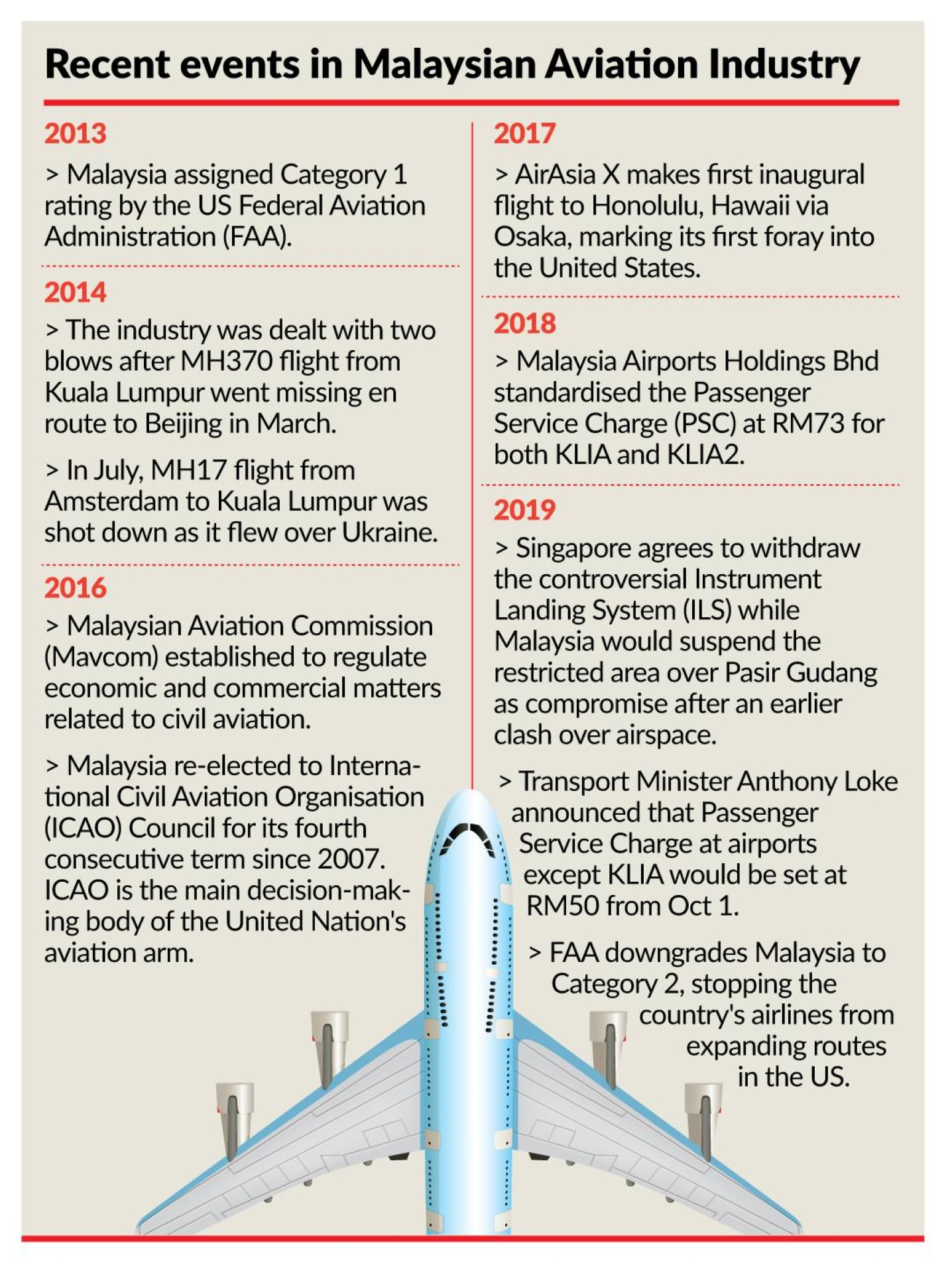Malaysian aviation hits bumpy ground
PETALING JAYA: Red flags have been raised about the health of the Malaysian aviation industry nearly a year before the United States Federal Aviation Administration (FAA) slapped us with a downgrade.
It will take about two years before the FAA is likely to upgrade Malaysia’s safety rating, which will allow our airlines to service more routes in the US, said Maybank Investment Bank Research.
“The Federal Government will have to disburse significant resources to address the shortcomings as CAAM does not even have sufficient revenue to cover its operating cost.
“Furthermore, a follow-up audit will be determined and scheduled by the US FAA, not Malaysia. We think it will take two years at best to get back to Category 1 status, ” said Maybank Research.
CAAM is Civil Aviation Authority of Malaysia.
The research house said Malaysia’s potential risk of failing a safety audit by international regulators has been highlighted in a December report, with manpower problems being among the reasons.
In the report titled 2019 Outlook and Lookouts, insufficient new staff was highlighted as one of the reasons Malaysia could fail the test.
Other manpower problems include poor staff retention and low salaries.

Maybank Research said it normally takes eight to 12 years to properly train a qualified civil aviation professional.
“Very often, the individual loses interest and leaves halfway and the moment they are deemed qualified, they are quickly poached by other countries, ” it said.
On the issue of salary, it said CAAM comes under the purview of the Public Service Department, which follows the government pay scale whereby it is based on seniority rather than qualification.
“This is not the case abroad as airports are run as a competitive business and they are willing to pay top dollars for talent so it is understandable why CAAM suffers a low staff retention rate, ” said Maybank Research.
It added that remuneration packages for qualified air traffic controllers and aircraft safety auditors abroad are four to six times higher than what is earned at CAAM.
It was also revealed that CAAM had missed audits or slow to follow-up after existing audits, which is also attributed to the lack of manpower as that agency prioritises on more pressing tasks.
Another reason that could have caused CAAM to be downgraded to Category 2 was its dated infrastructure.
Maybank Research said the level of infrastructure in Malaysia is mixed with busier airports getting more state-of-the-art equipment compared to quieter airports.
While it makes financial sense and has no implication to safety, Maybank Research said the move bogs down the efficiency of the entire system.
“It is pointless to provide Kuala Lumpur with the best system as it will be constrained by ‘inferior’ ones outside Kuala Lumpur. In this industry, you are only as good as your weakest link, ” it said.
For example, Malaysia had refused, up to this year, to allow Singapore to use the Instrument Landing System (ILS) to guide aircraft flying from Malaysia into Singapore’s Seletar airport, despite ILS’ proven value in assisting pilots land during reduced visibility.
ILS uses a combination of radio signals and, in many cases, high-intensity light fixtures to provide accurate guidance to an aircraft making an approach to land during low visibility.
Source: TheStar



